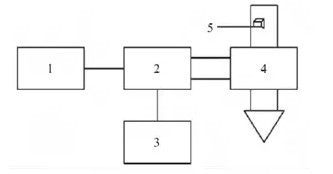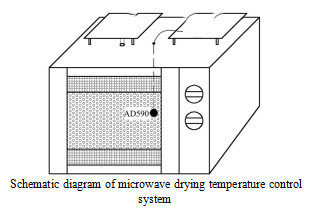Microwave drying characteristics of grass carp fillets

Abstract: In order to improve the deep processing technology and drying process of freshwater fish such as grass carp, the characteristics of microwave drying and hot air drying of grass carp fillets were studied, and the best drying model was determined. The results show that when the microwave drying equipment is raised from 200 W to 800 W, the effective water diffusion coefficient increases from 0.995 4 × 10 - 9 m2 / s to 2. 344 3 × 10 - 9 m2 / s; when the hot air drying temperature When the temperature rises from 60 °C to 80 °C, the effective water diffusion coefficient increases from 4.001 4 ×10 - 10 m2 / s to 7.291 2 × 10 - 10 m2 / s, but the value is still lower than the moisture diffusion during microwave drying. Coefficient value.
The experimental data were fitted by a common thin-film drying model. By comparing the correlation coefficient R2, the square of the residue and the RSS and the chi square χ2, the Page model had the highest microwave drying fit for the grass carp fillets, and the Two term model. The hot air drying process of grass carp fillets has the highest fitting degree.
Key words :grass fish microwave drying; hot air drying; dynamic model
China's freshwater fish is rich in production. Among them, low-value freshwater fish such as grass carp, carp, and carp account for 60% of freshwater fish production. Fresh fish has more than 80% water content. Microorganisms are easy to breed and their biochemical reactions are better than meat. It is easy to spoil and deteriorate, and it is not easy to store, which limits the consumption of freshwater fish.
Grass carp is one of the important freshwater economic fish in China and is easy to breed. Grass carp is simple in food and has a wide range of bait. The grass carp is large in size, tender in meat, rich in nutrients such as protein and amino acids, and has a fast growth rate, high yield and low price, which is favored by consumers. Drying is considered to be a common technique for the preservation of agricultural and marine products. Not only that, some scholars have confirmed that the pre-drying operation can reduce the oil absorption of the food during the frying process.
The traditional drying methods are mainly dry day drying and hot air drying. The equipment used for hot air drying has less investment and simple operation process, but the hot air drying energy consumption is large, the operation time is long, and it is easy to cause thermal damage and excessive oxidation of materials. 2 methods There are deficiencies in operational hygiene, processing efficiency, and food quality control. As a new drying technology, microwave drying, due to its fast drying rate, clean and good controllability, has been rapidly developed in recent years in the application of cereals, fruits and vegetables, oil materials, etc., but in terms of aquatic products. There are few applied studies.
Microwave drying is significantly different from traditional drying methods. Traditional drying passes heat conduction, and heat enters the interior from the outside of the material. Microwave drying is generated by high-frequency reciprocating motion of internal dipole molecules, which has a fast heat transfer rate and high efficiency. After the microwave drying of squid and tilapia, Duan Zhen et al found that the lower microwave power helps to maintain the good quality of the fish fillets.
Freshwater fish and fish are used as raw materials, and fish fillets of various flavors have been developed through pickling, cooking, baking and other processes. The research on drying the grass carp fillets by microwave drying method is rarely reported. In this paper, the microwave drying law of grass carp fillets was studied and compared with the hot air drying process. The experimental results were analyzed and fitted to determine the best drying model.